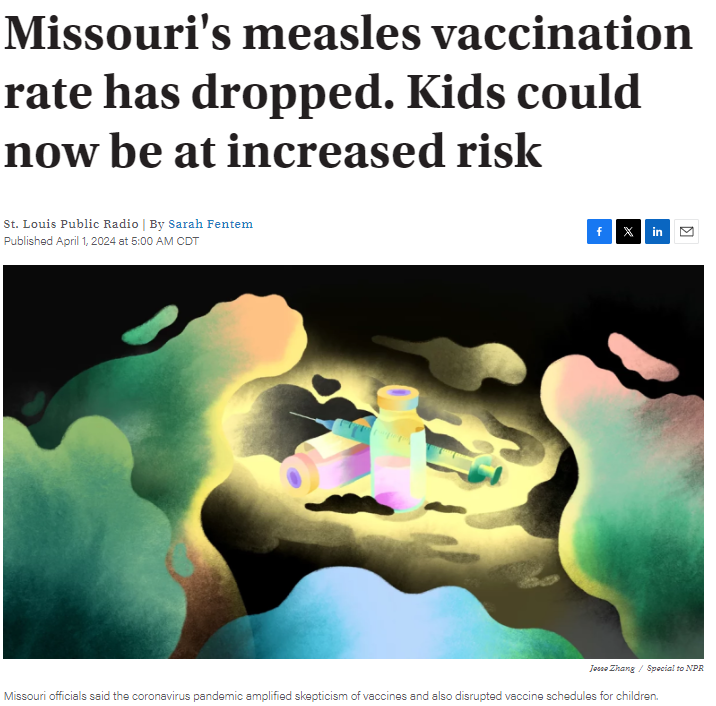“Why not protect them for the rest of their life?” That question is posed in an upcoming Missouri Immunization Coalition (MIC) radio spot on the benefits of the human papillomavirus (HPV) vaccine. This radio spot is part of a much larger MIC HPV cancer prevention campaign focused on HPV vaccination awareness. “MIC is dedicated to keeping Missourians healthy by building awareness for vaccines, such as the HPV vaccine, with the goal of increasing vaccination rates throughout the state,” said Nicole Cope, MIC’s Executive Director. “Our message is clear. The HPV vaccine prevents certain types of cancer.”
HPV infects about 13 million people, including teens, each year. While most HPV infections go away on their own, infections that do not go away can lead to cancers of the cervix, vagina, vulva, penis, anus, and the back of the throat, including the base of the tongue and tonsils. Every year in the United States, HPV causes about 36,000 cases of cancer in men and women. Lynelle Phillips, MIC’s Board President, says each one of these cases represents a personal story:
My spouse, an oncologist, often shared some of the tragic stories of people suffering from HPV-related cancers. The stories behind the numbers involve grueling surgeries, debilitating radiation treatments, miserable rounds of chemotherapy, and upended lives. How fortunate we are to now have a vaccine that prevents these cancers! I am very excited that the Missouri Immunization Coalition has launched an HPV vaccination campaign that will save lives and prevent cancer for a healthier future for Missouri.
HPV cancer protection starts with vaccination. All children ages 11-12 years should get the HPV vaccine to protect against cancers caused by HPV infections. In fact, HPV vaccination could prevent more than 90% of these cancers from ever developing. Dr. Kenneth Haller, Professor of Pediatrics, Department of Pediatrics, Saint Louis University School of Medicine, explains:
Cervical cancer is one of the most devastating diagnoses that a person can receive. Luckily, there is a way to prevent it. Since the introduction of the HPV vaccine, the rates of cervical cancer have dropped by an astonishing 90% in people who have received that vaccine compared to the general population. And the earlier you get it the better. HPV vaccine can be started as early as nine years of age, and the longer you delay getting it for your children the more doses of vaccine are needed to achieve adequate protection. So don’t delay! Get your kids their HPV vaccine as early as possible and protect them against life-threatening cancers.
Despite the tragic stories of people suffering from HPV-related cancers, Missouri’s HPV vaccination rate ranks behind most other states. According to America’s Health Rankings, Missouri ranks 35th in the country at 59.3 percent. That is the percentage of adolescents ages 13-17 who received all recommended doses of the HPV vaccine. By comparison, Rhode Island is number one in the country, with a vaccination rate of 83.2 percent. “We have a tremendous opportunity with HPV vaccines to prevent not only future infections in our children but infections that may eventually cause cancer later in their lifetimes,” said Lisa Cox, Communications Director, Missouri Department of Health and Senior Services. “As a mother, I am grateful to be able to lower my children’s risk of a future cancer diagnosis by doing something so safe and so simple.”
In September of 2022, St. Jude Children’s Research Hospital issued a report titled, Analysis of Public Policy Decisions and Factors Driving HPV Vaccination Coverage in the United States. St. Jude’s goal is to support current HPV vaccination and policy efforts that work and to introduce new ones focused on increasing HPV vaccination coverage. Julia Neely, Program Manager, HPV Cancer Prevention Program, St. Jude Children’s Research Hospital, says we must understand what is driving the hesitancy:
HPV vaccination is safe, effective, and provides long lasting protection against HPV cancers. Still, too few adolescents are being vaccinated across the U.S. Many factors influence this outcome, and these factors look different across varying contexts. It was important for us to understand the complexity of these factors and the potential negative influences and to make realistic recommendations to address these issues.
According to their report, “Increased HPV vaccination series completion and reduced HPV cancer incidence resulting from addressing these policy factors could reduce national direct health care expenditures by more than $26 million.”
For a second year in a row, St. Jude Children’s Research Hospital has partnered with MIC on the billboard portion of MIC’s HPV Cancer Prevention campaign. The billboards that will be seen around the state have a clear message, “Protect Them Today for a Promising Tomorrow.”
In addition to radio spots and billboards, MIC’s HPV Cancer Prevention campaign consists of social media ads in both English and Spanish as well as ads that will be seen at various sports arenas. Moreover, MIC has a designated section of the MIC website dedicated to HPV vaccine awareness. On a desktop, look for the red button at the top of the MIC website titled “Prevent Cancer Together” or that same language in the directory on a mobile phone.
Inside the HPV vaccine awareness section of the MIC website, users will find the following topics: About HPV, How HPV Spreads, HPV Symptoms, About HPV Vaccines, Types of HPV Vaccines, Frequently Asked Questions, HPV Fast Fact Sheet, and the HPV Toolkit. The HPV Fast Fact Sheet is a downloadable PDF that can be hung from a wall or referenced from one’s desk. The HPV Toolkit, like other MIC toolkits, furthers MIC’s mission of promoting immunizations, preventing disease, and protecting Missourians. This toolkit contains videos, social media graphics, and more. Some of these materials are co-brandable. Use these assets to educate and encourage people to get vaccinated.
The MIC is dedicated to keeping Missourians healthy by building awareness for vaccines. Together we can prevent HPV-related cancers through immunization education, advocacy, promotion, and statewide collaborative partnerships.




